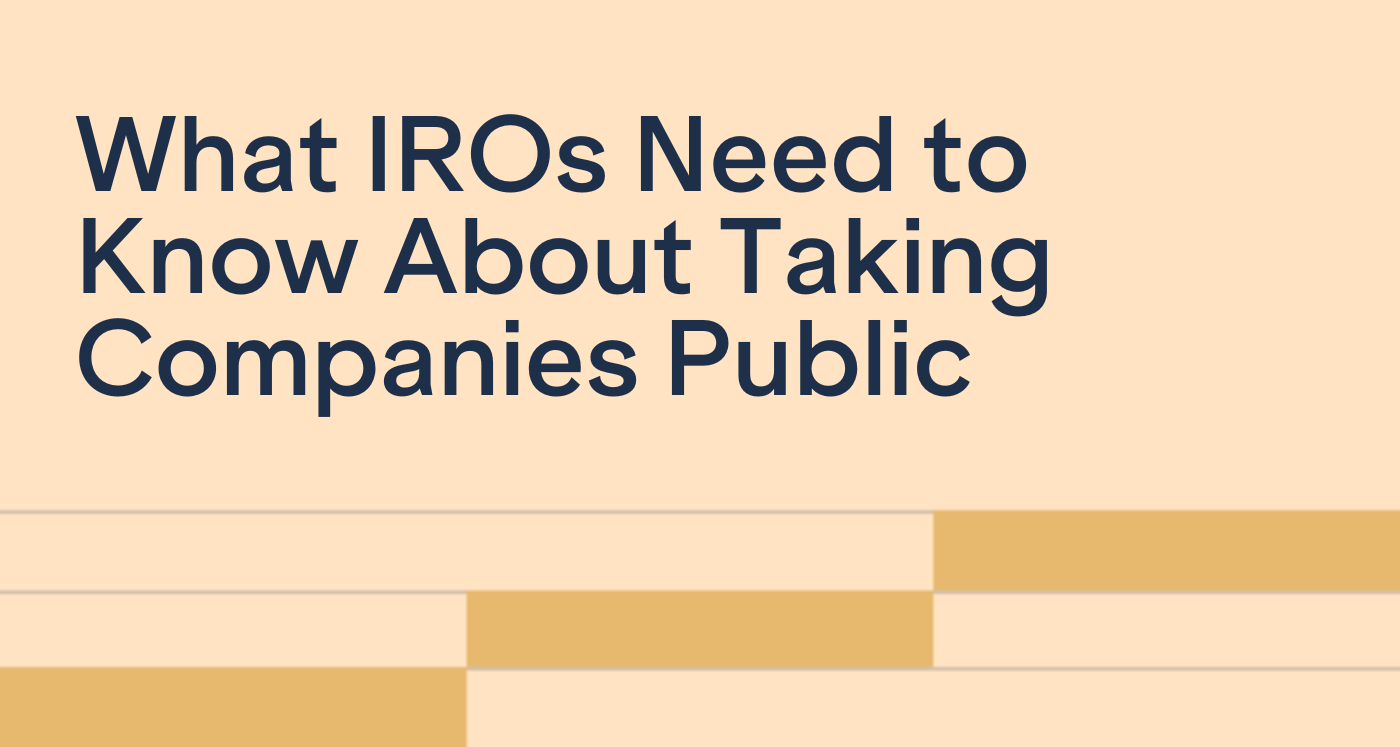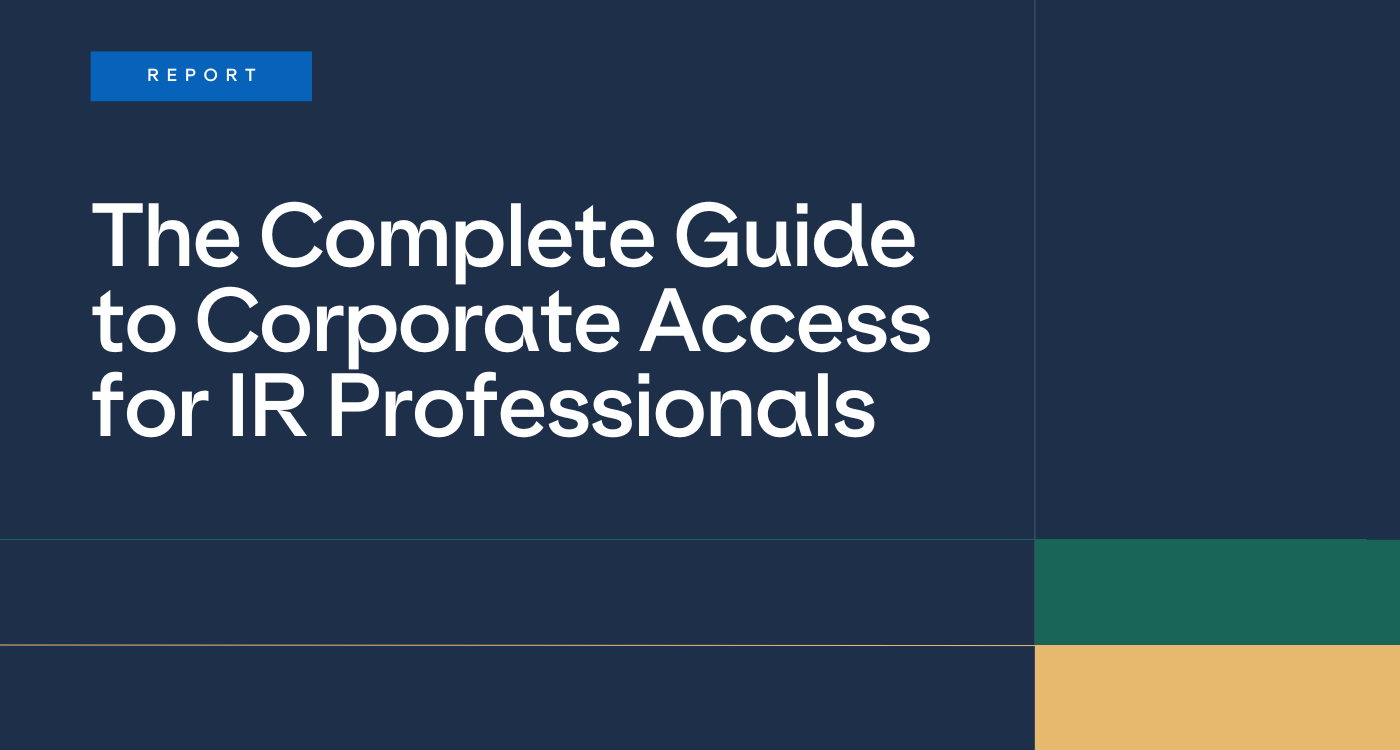
How To Determine Your Peers And Conduct An In-Depth Industry Analysis

Having a strong understanding of your closest peers and your company’s position within your peer group is a key foundational component underpinning an effective investor relations strategy. Understanding who your true peers are and the similarities and differences between them is crucial to understanding how you stack up within your industry. This article will discuss what a peer group is, various ways to classify peer groups, and how to effectively incorporate an industry analysis into your investor relations strategy.

What is a Peer Group
A peer group is a set of businesses with similar core functions and economic practices. Not only are peers normally in the same sector, but they usually have other similarities, such as their primary economic activities, size/scale (typically measured in market capitalization or revenue), business model, and geography.
It is important to note that the most similar peers tend to also compete with one another. For instance, Cargill and John Deere are both big players in the broader agriculture industry, but would not be considered peers because their offerings (food products and farm equipment, respectively) are not in direct competition with each other.
Once you have a good understanding of the key characteristics that will allow you to determine peers who are most relevant to your business, you can start performing a more in-depth analysis on your peer group.
Why Is Understanding Your Peer Group Important?
Performing an in-depth peer analysis can be beneficial in many respects. It can be helpful to understand where your peers stand and how they are positioning themselves within your industry, which can then aid you in uncovering areas of opportunity and provide a relative baseline for you to compare your business’ performance against.
You can also use a peer analysis as a way to dive deeper into the underlying business models of your closest peers which should allow you to better understand how prospective investors may evaluate your company based off how they assess and value your peers. Additionally, having a thorough understanding of your peers allows for more seamless tracking of relevant news flow and corporate events within your industry.
Learn how Irwin can help you gain a competitive edge on your peers.
Sizing Up The Market Opportunity Within Your Industry
A good approach when performing an analysis of your industry/sector is to start at the top and work your way down. One of the most important things your industry analysis will cover is the size and scope of the market you are operating within. Understanding this can then allow you to better determine your Total Addressable Market (TAM), which is typically measured as the total immediate revenue opportunity (based on an estimate of aggregate annual revenues available to all participants) within an industry/sector. Having a strong understanding of your TAM is key to understanding the opportunity ahead of you. It makes sense to contextualize your TAM in two different ways, broadly and more specifically.
Let’s use Irwin for example, which is broadly classified as an enterprise software company. It is estimated that the global Enterprise Software industry has a TAM of over $600B. While that’s an interesting and inspiring figure, it disingenuously compares Irwin to every enterprise software solution, even those with no functional overlap. Even if we narrow down to just enterprise financial software, we’re still unhelpfully looking at a TAM that includes non-competitive or complementary products such as accounting software. To get a full picture of our actual TAM and our peers, we would need to specifically zero-in on the total addressable market for investor relations software.
When digging into a company’s immediate TAM an IRO should be able to better assess a number of key characteristics specific to their industry. To begin, this assessment will provide an initial glance at the demand profile and competitive dynamics of the industry, which you can then use to help determine estimates around market share, medium and longer-term growth trends, and pricing power. Additionally, drilling down into one’s TAM can help uncover relevant expansion, growth, and acquisition opportunities that may not have previously been apparent to you or your management team. In fact, you might even notice that some of your peers have already branched out in an attempt to occupy more of the sector.
The other key benefit of having a strong understanding of your TAM and the players within it, is that it helps you crystallize who your true peers really are. This not only allows you to accurately identify relevant peers, it also improves your ability to benchmark success within your niche.
Conducting A Deeper-Dive Into Peer Business Models
Once you have identified the key peers in your market, you are ready to analyze the similarities and differences across their business models in greater detail. Looking into the economics behind revenue generation, cost structure, delivery and logistics of the product/service, contract structures, and pricing are examples of some of the key areas you may want to investigate further. However, each industry has its own nuances and specific characteristics, so it is important to be aware of what those are and incorporate them accordingly into your analysis.
Some key questions to consider when undertaking this type of examination include:
Revenue Generation
- What is the primary avenue(s) in which the business makes money?
- Who are the different parties involved in these transactions and how frequently do they occur?
- From an accounting perspective, how is revenue recognized at the company?
- How does the business prioritize new vs. returning customers?
Cost Structure
- What are the major costs required to sell their good or provide their service, and how does that compare to your business?
- What does the fixed vs. variable cost breakdown look like?
- What are the major areas of investment required to run the business? What portion of that can be capitalized vs. expensed?
- What is the make-up of the employee base? Are there unions involved? Is a significant amount of labor contracted or outsourced?
Delivery of Products and Services
- How does the company deliver their service or product to their customers?
- How complicated are the logistics associated with their business?
- Do they use a middle-man for distribution and/or sale?
Contract Structures
- What is the typical contract length for customers?
- Do contracts include built-in pricing escalators or do they have a mechanism to protect against cost inflation?
- How competitive is the process required to secure these contracts?
Pricing
- How does their pricing model differ from yours and others within the industry?
- Are they price setters or price takers?
- If a similar product or service, how is it priced relative to yours and your competitors?
Get strategic peer insights delivered straight to your inbox with Irwin’s Professional Services.
Understanding the Key Themes Across Your Peer Group and Within Your Sector
While the above should lay a strong foundation for deeper analysis at the micro level, it is equally important to stay abreast of key macro themes that are expected to impact your sector both now and in the future. As such, your peer analysis should take a closer look into the prevailing industry themes that are most topical in your sector.
Some themes may affect your peers in a way that reduces negative externalities, while other themes may act as industry headwinds, and others may relate closely to innovation and new growth opportunities within the sector. For example, environmental, social, and governance (ESG) themes are increasingly important to issuers as investors continue to place greater focus on how companies have a positive impact on the world around them.
More examples of potential themes may include (but are not limited to):
- The broader energy transition (ie. Carbon emission reduction and intensity)
- Labor and wage dynamics
- Work-from-home/hybrid work
- Post-pandemic e-commerce trends
- The Metaverse
A thorough analysis should identify the themes pertinent to your sector and analyze how your primary peers are addressing and reacting to those themes. This can help you find out if there are new technologies or processes that are being adopted that are helping your peers improve their bottom line or appeal to a broader group of shareholders.
Conclusion
Conducting an in-depth analysis of the different players within your market is a good foundation for developing your understanding of who your most relevant peers are and crafting your competitive strategy. Should you conduct this type of analysis, be sure to spend time assessing your TAM, your peer’s business models, and the popular themes within your industry.
Discover Your Peers
Irwin's intelligent insights show you who your true peers are.
You may also like
Go back to all posts

Building a Next-Generation IR Career: Insights from Patricia Cruz
Building a Next-Generation IR Career: Insights from Patricia Cruz, Senior Manager of Investor Relations at Etsy

The Complete Guide to Corporate Access for IR Professionals
Download The Complete Guide to Corporate Access for IR Professionals: Strategic Insights for Building Meaningful Investor Relationships